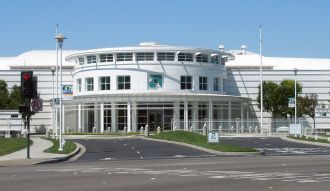 AMD has been showing the Game Developer Conference in San Francisco its LiquidVR SDK that will help developers customise virtual reality content for AMD hardware.
AMD has been showing the Game Developer Conference in San Francisco its LiquidVR SDK that will help developers customise virtual reality content for AMD hardware.
AMD said that LiquidVR SDK makes a number of technologies available which help address obstacles in content, comfort and compatibility that together take the industry a major step closer to true, life-like presence across all VR games, applications, and experiences.
Its theory is that which company wins the war to make virtual reality worthwhile will be the outfit that can build the strongest sense of “presence.” This is jargon for the feeling you have of actually being in the virtual world.
Like most things computer geeky it can be determined by a maths formula which is based on the speed with which the virtual world (within your view) updates as you move.
If you physically turn your head but there’s even a short pause before your view updates in the virtual world, the sense of actually being in the world is lost.
Oculus has signed up for AMD’s LiquidVR SDK and Brendan Iribe, CEO of Oculus said that achieving presence in a virtual world continues to be one of the most important elements to delivering amazing VR.
“We’re excited to have AMD working with us on their part of the latency equation, introducing support for new features like asynchronous timewarp and late latching, and compatibility improvements that ensure that Oculus’ users have a great experience on AMD hardware.”
AMD showed off several features of the LiquidVR SDK at the conference, including Affinity Multi-GPU, which lets multiple GPUs work together in VR applications (important for framerate improvements) and asynchronous shaders for Hardware-Accelerated Time-Warp, which is meant to improve motion-to-photon latency, or your sense of presence.






